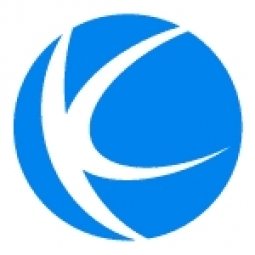Customer Company Size
Mid-size Company
Region
- America
- Asia
Country
- China
- United States
Product
- Kenandy cloud ERP
Tech Stack
- Cloud-based ERP
Implementation Scale
- Enterprise-wide Deployment
Impact Metrics
- Productivity Improvements
- Cost Savings
Technology Category
- Platform as a Service (PaaS) - Data Management Platforms
Applicable Industries
- Electronics
Applicable Functions
- Discrete Manufacturing
Use Cases
- Manufacturing System Automation
Services
- Cloud Planning, Design & Implementation Services
About The Customer
Blue Clover Devices is an award-winning original design manufacturer (ODM) that produces UL-certified power and audio accessories for some of the world’s most popular digital devices. The company has a global presence with offices in China and the United States. Since its founding in 2003, Blue Clover has continued to grow, focusing on enhancing efficiency as a means for successful business expansion. The company's products are used in a wide range of digital devices, making it a key player in the electronics industry.
The Challenge
Blue Clover Devices, an international company with offices in China and the United States, faced challenges related to conducting business in multiple languages and currencies. The company's purchase orders and inventory management were being handled by two separate systems that couldn’t even talk to one another. This lack of integration was causing inefficiencies and hindering the company's growth. The company was in need of a solution that could handle their global operations and improve their efficiency.
The Solution
Blue Clover Devices implemented Kenandy cloud ERP, a system designed specifically for manufacturers. Kenandy not only speaks multiple languages, it also speaks manufacturing. This was an important differentiator for Blue Clover. The system is fast to implement and simple to use, with drag-and-drop templates that let users easily create customized objects, processes, and dashboards. With Kenandy, Blue Clover's purchase orders and inventory management functions have been seamlessly integrated, along with many other productivity features. The company has also found it easy to add their own customized objects—samples, test reports and regulatory certificates, for example— that not only are connectable and searchable, but also make the business run more efficiently and effectively.
Operational Impact

Case Study missing?
Start adding your own!
Register with your work email and create a new case study profile for your business.
Related Case Studies.

Case Study
Remote Temperature Monitoring of Perishable Goods Saves Money
RMONI was facing temperature monitoring challenges in a cold chain business. A cold chain must be established and maintained to ensure goods have been properly refrigerated during every step of the process, making temperature monitoring a critical business function. Manual registration practice can be very costly, labor intensive and prone to mistakes.

Case Study
Cloud Solution for Energy Management Platform-Schneider Electric
Schneider Electric required a cloud solution for its energy management platform to manage high computational operations, which were essential for catering to client requirements. As the business involves storage and analysis of huge amounts of data, the company also needed a convenient and scalable storage solution to facilitate operations efficiently.

Case Study
Leveraging the IoT to Gain a Competitive Edge in International Competition
Many large manufacturers in and outside Japan are competing for larger market share in the same space, expecting a growing demand for projectors in the areas of entertainment, which requires glamor and strong visual performance as well as digital signage that can attract people’s attention. “It is becoming more and more difficult to differentiate ourselves with stand-alone hardware products,” says Kazuyuki Kitagawa, Director of Service & Support at Panasonic AVC Networks. “In order for Panasonic to grow market share and overall business, it is essential for us to develop solutions that deliver significant added value.” Panasonic believes projection failure and quality deterioration should never happen. This is what and has driven them to make their projectors IoT-enabled. More specifically, Panasonic has developed a system that collects data from projectors, visualizes detailed operational statuses, and predicts issues and address them before failure occurs. Their projectors are embedded with a variety of sensors that measure power supply, voltage, video input/ output signals, intake/exhaust air temperatures, cooling fan operations, and light bulb operating time. These sensors have been used to make the projector more intelligent, automatically suspending operation when the temperature rises excessively, and automatically switching light bulbs. Although this was a great first step, Panasonic projectors were still not equipped with any capability to send the data over a network.






